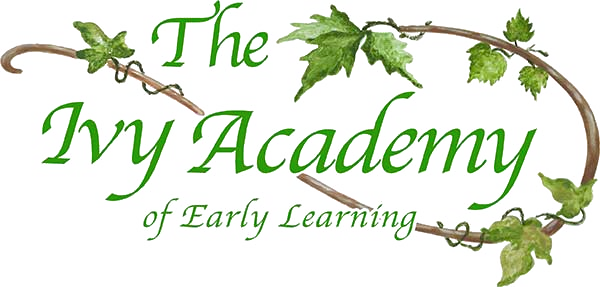Child Development, Parenting, School Readiness
Setting Up Structure and Rules Without Becoming the ‘Mean Parent’

Setting Up Structure and Rules Without Becoming the ‘Mean Parent’
As parents, we often worry that establishing rules will earn us the dreaded “mean parent” label. At The Ivy Academy, we see this concern frequently from families across our Geneva, Elgin, and North End preschool communities. The good news? Research consistently shows that children actually thrive when given clear boundaries—especially when those boundaries are set with empathy, consistency, and love.
Why Structure Matters for Your Child
Children crave predictability, even when they seem to fight against it. A structured environment with clear expectations provides the security young minds need to flourish.
When preschoolers understand what’s expected, they develop crucial life skills:
- Better emotional regulation
- Improved decision-making abilities
- Greater independence
- Enhanced sense of security
Research from developmental psychologists at Harvard’s Center on the Developing Child confirms that “predictable, responsive relationships and routines provide the foundation for healthy development in early childhood.”1
The Critical Difference: Structure vs. Control
Many parents confuse healthy structure with controlling behavior. Understanding this distinction is essential:
| Healthy Structure | Controlling Parenting |
|---|---|
| Collaborative approach with child input when possible | Dictatorial with little room for discussion |
| Explains reasoning behind rules | Expects blind compliance |
| Adjusts as child develops | Remains rigid regardless of circumstances |
| Goal: growing responsibility and autonomy | Goal: immediate obedience |
According to child development expert Dr. Diana Baumrind, who pioneered research on parenting styles, “authoritative parenting”—which balances clear boundaries with warmth and reasoning—consistently produces the best outcomes for children compared to permissive or authoritarian approaches.2
Practical Strategies for Setting Kind Boundaries
1. Be Clear and Specific
Young children thrive with concrete instructions. Instead of saying “be good” (which is vague and unhelpful), try specific guidance like “we use walking feet inside” or “toys need to be put away before bedtime.”
At The Ivy Academy preschools in Geneva and Elgin, our teachers use simple, direct language that preschoolers can easily process. This clarity helps children understand exactly what successful behavior looks like.
2. Involve Your Child in the Process
Even young children can participate in creating family rules. This involvement builds ownership and reduces resistance. Try asking:
- “What should our morning routine include?”
- “How can we make cleanup time fair for everyone?”
- “What helps you feel calm at bedtime?”
Offering limited choices within boundaries builds decision-making skills. “Would you like to brush teeth first or put on pajamas first?” provides structure while honoring your child’s growing independence.
Research from the American Academy of Pediatrics emphasizes that when children participate in creating rules, they’re more likely to follow them and understand their importance.3
3. Always Explain the “Why”
Children are naturally curious. When they understand the reasoning behind rules, they’re more likely to cooperate willingly rather than reluctantly. Simple explanations satisfy this curiosity:
- “We wash hands before eating to keep germs away”
- “We use inside voices so everyone can hear each other”
- “We hold hands in parking lots because cars might not see small people”
4. Model the Behavior You Expect
Young children learn primarily through observation. When you demonstrate respectful communication, emotional regulation, and following household rules yourself, your child internalizes these behaviors.
Child psychologist Dr. Laura Markham emphasizes that “children learn more from what we do than what we say,” making parental modeling one of the most powerful teaching tools available.4
This modeling approach is central to our curriculum at The Ivy Academy’s preschool programs in Geneva, Elgin, and North End. Our teachers consciously demonstrate the social skills we hope children will develop.
5. Stay Consistent While Remaining Compassionate
Consistency creates security. When children can predict outcomes based on their choices, they develop cause-and-effect thinking. However, consistency doesn’t mean rigidity or harshness.
Your tone matters tremendously. Even when enforcing a boundary, maintain a neutral, matter-of-fact voice. “It’s time to leave the playground now. We can come back tomorrow” delivers the same message as “That’s it! We’re going NOW!” but without the emotional charge that triggers resistance.
The Child Development Institute notes that “inconsistent discipline sends mixed messages to children about what is expected of them,” leading to increased testing behaviors and confusion.5
Addressing the “Mean Parent” Fear
Many parents, especially those who value being liked by their children, worry that setting boundaries will damage their relationship. Research suggests the opposite is true.
Children with clear, consistent boundaries actually report feeling more secure in their relationship with parents. They understand what to expect, which reduces anxiety and builds trust.
Dr. Dan Siegel, clinical professor of psychiatry at UCLA, explains that boundaries actually strengthen attachment: “Setting limits with respect and empathy helps children feel safe and secure in their relationship with you.”6
Science-Backed Boundary-Setting Tips
Keep It Manageable
Young children have limited working memory. For preschool-aged children, focus on 3-5 primary rules. Child development experts recommend this limited number based on cognitive development research with preschoolers.7
At The Ivy Academy’s Geneva and Elgin preschool classrooms, we maintain simple, consistent expectations that children can readily remember.
Catch Them Being Good
Positive reinforcement works better than correction. When you notice your child following a rule, acknowledge it specifically: “I noticed you put your shoes on the rack! That helps keep our hallway safe for everyone.”
Research on behavioral psychology shows that positive reinforcement is significantly more effective than punishment in establishing lasting behavior change.6
Create Visual Reminders
Young children benefit from visual cues. Consider creating:
- A morning routine chart with pictures
- A cleanup countdown timer
- Picture labels on toy bins
- A feelings chart to help with emotional regulation
Maintain Calm During Testing Periods
Children naturally test boundaries—it’s how they learn about their world. When your child pushes back against a rule, remain calm and matter-of-fact. Restate the expectation clearly without getting drawn into negotiation or emotional escalation.
Child development experts at Heart-Mind Online explain that “testing limits is developmentally appropriate and helps children understand how the world works.” Responding with consistency and compassion during these moments helps children internalize boundaries.5
In our Geneva preschool program, teachers use redirection techniques that acknowledge feelings while reinforcing boundaries: “I see you’re excited about playing more, AND it’s cleanup time now. Would you like to put the blocks away or the books first?”
Use “Creative Yes” Responses
Rather than simply saying “no” to inappropriate behaviors, offer alternatives that teach what is allowed. This approach, recommended by early childhood educators, helps children learn acceptable behaviors while still honoring their needs.2,3
For example:
- Instead of “No climbing on the furniture,” try “Climbing is for the playground. Let’s go outside after lunch where you can climb safely.”
- Instead of “Stop running,” try “Walking feet inside, running feet outside.”
Adjust Boundaries as Children Grow
Effective structure evolves with your child’s development. Boundaries that were necessary for your 3-year-old might need adjustment for your 4-year-old as they develop greater self-regulation. The umbrella of safety remains, but the specific rules can mature with your child.
When Structure Meets Warmth: The Ivy Academy Approach
At The Ivy Academy preschools in Elgin, Geneva, and North End, we combine clear structure with genuine warmth. This balanced approach helps children feel both secure and valued.
Our teachers:
- Establish consistent daily routines children can count on
- Explain the reasoning behind classroom expectations
- Involve students in creating classroom agreements
- Use positive reinforcement to encourage helpful choices
- Maintain calm, respectful tones even during challenging moments
Parents frequently tell us that they see positive changes at home after their children experience this structured-yet-nurturing environment at our preschools.
Your Child Deserves Both Love and Limits
Remember that providing structure is an act of love. By establishing clear, consistent, and compassionate boundaries, you’re giving your child the tools they need to thrive—not just in preschool, but throughout life.
When you balance warmth with structure, you’re not being a “mean parent.” You’re being exactly the parent your child needs: one who cares enough to create safety, predictability, and the framework for developing self-regulation.
At The Ivy Academy’s preschools in Geneva, Elgin, and North End, we partner with parents to create this balanced approach both at school and home. Together, we’re raising children who understand healthy boundaries, respect others, and feel secure in their world.
Learn More
Interested in learning more about our structured-yet-nurturing approach? Schedule a tour at one of our locations:
- Geneva preschool: Schedule a tour
- Elgin preschool: Schedule a tour
- North End location: Schedule a tour
Sources
1 Harvard Center on the Developing Child. “Key Concepts: Serve and Return.”
2 Baumrind, D. (1966). “Effects of Authoritative Parental Control on Child Behavior.” Child Development, 37(4), 887-907.
3 American Academy of Pediatrics. (2018). “Positive Reinforcement Through Rewards.”
4 Markham, L. (2012). “Peaceful Parent, Happy Kids: How to Stop Yelling and Start Connecting.”
5 Heart-Mind Online. (2019). “8 Steps to Set Compassionate, Kind Boundaries with Young Children.”
6 Siegel, D. J., & Bryson, T. P. (2014). “No-Drama Discipline: The Whole-Brain Way to Calm the Chaos and Nurture Your Child’s Developing Mind.”
7 Child Development Institute. (2020). “Appropriate Rules for Different Ages.”
8 Parent Data. (2022). “How to Set Boundaries with Your Child.”
